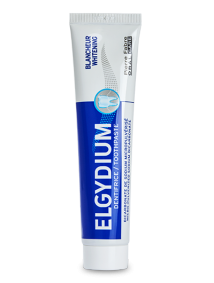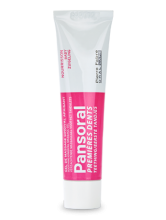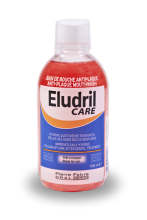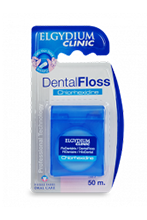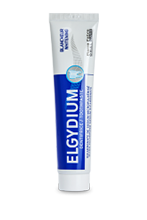Whiter teeth for longer
Why do teeth turn yellow?
What gives teeth their colour?
Teeth are made of dentine, covered with a thin layer of enamel. The colour and thickness of the dentine determine the shade of the tooth. The colour of the dentine is genetically determined, which means that some people naturally have whiter teeth than others. Generally speaking, canine teeth are yellower than other teeth because they contain more dentine.
Enamel is fairly transparent. However, a tooth whiteness is also partly due to the brightness of the enamel, so it is important to protect it and keep it clean.
Extrinsic discolouration of teeth
Surface or extrinsic discolouration is caused by deposits of coloured substances on the enamel. This can sometimes form stains, particularly between the teeth. Extrinsic discolouration is largely the result of lifestyle and everyday habits: regular consumption of coffee, black tea, red wine, cola drinks and also smoking.
Intrinsic discolouration of teeth
Intrinsic discolouration is due to the natural colour of the dentine, which tends to become darker with age. It affects the tooth deep down and requires treatment by a dentist.
What techniques can whiten teeth?
Whitening teeth at the dentist's
Dentists can remedy extrinsic and intrinsic discolouration by applying a whitening gel containing high concentrations of peroxide, ensuring the gums are protected. The appointment lasts for about one hour and the process can be repeated a number of times.
Whitening teeth with custom-made mouth trays
In this case, the dentist produces a tray that is custom made to fit the shape of the patient's mouth. The patient puts peroxide gel (provided by the dentist) into the trays and then wears them every day for one to two weeks, for as little as an hour a day, or overnight at the longest. This method treats extrinsic and intrinsic discolouration.
Whitening teeth using products available in pharmacies
It is possible to tackle extrinsic discolouration by using a combination of products specifically designed for this purpose, such as a polishing toothbrush, whitening toothpaste for daily use and a special whitening paste to be used twice a week instead of the usual toothpaste.
How long do teeth remain white following treatment?
Extrinsic whitening techniques
Extrinsic techniques (toothpastes, whitening pastes, etc.) act on the surface of the teeth, so their effects only last for as long as they keep being used. Once you stop using them, surface discolouration gradually returns, particularly for those who consume substances that stain teeth, like tobacco, coffee, black tea, red wine, etc.
Intrinsic whitening techniques
On healthy teeth, a dentist?s ?deep? whitening techniques last for around three years, although discolouration gradually reappears after about one year. The effects are longer lasting in younger patients and this duration reduces with age. The benefits obviously disappear more quickly for people who smoke or often consume coffee, black tea, cola drinks, etc.
How can you limit yellowing?
1. Use a suitable toothpaste every day
Using a toothpaste with bicarbonate of soda crystals will help to restrict the damaging effect of substances that cause staining and prevent the appearance of surface stains. Remember to brush your teeth three times a day, especially after consuming red wine, coffee, black tea or after smoking.
2. Choose a suitable toothbrush
Certain toothbrushes are specially designed to polish the enamel and so prevent extrinsic and intrinsic surface discolouration. Be careful not to choose a brush that is too abrasive, as it may damage the enamel and irritate your gums. Remember to change your toothbrush at least every three months.
3. Use a special polishing paste twice a week
Polishing pastes are toothpastes containing high concentrations of polishing agents, such as silica derived from mineral sources or from bamboo. To maintain the quality of the enamel, these pastes must only be used twice a week, instead of the usual toothpaste.
4. Regular visits to the dentist
Regularly consulting your dentist provides the opportunity to whiten your teeth if necessary (using products with high concentrations of peroxide), but also to eliminate tartar which can give the teeth a yellowish hue. Healthy teeth and gums are also an essential prerequisite for whitening the teeth.
5. Avoid substances that cause staining
If your teeth tend to turn yellow quickly, it is worth adopting some good habits: systematically brush after consuming coffee, red wine or berries (blueberries, blackcurrant, etc.), drink green tea instead of black tea and, above all: Give up smoking! Another good reason to kick the habit!
Teeth Whitening
With the right tools, it is easy to keep teeth white: a toothbrush and toothpaste designed to remove surface discoloration, a whitening agent and the help of your dentist.
See the program
